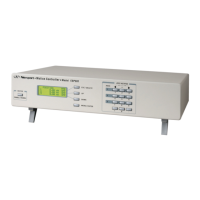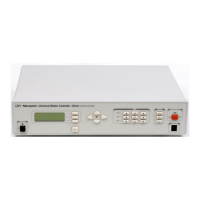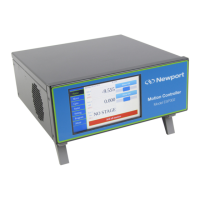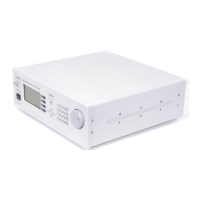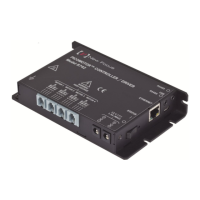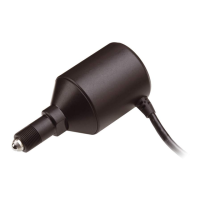XPS-Q8 Controller Motion Tutorial
• Output of the PID is an acceleration value in units/s
2
.
Kp is given in 1/s
2
.
Ki is given in 1/s
3
.
Kd is given in 1/s.
Filtering and Limitation:
• ScalingAcceleration (units/s
2
) is the theoretical acceleration of the stage resulting
from a 10 V input to the driver (depends on the stage payload).
• AccelerationLimit (units/s
2
) is the maximum acceleration allowed to be commanded
to the driver.
14.3.2.2 Basics
The derivative term Kd drives the cut-off frequency of the closed loop and must be
adjusted first (the loop will not be stable with only Kp).
Due to the double integration of the acceleration command in a position by the stage
encoder, the overall gain of the derivative path at a given frequency Frq is equal to
Kd/2πFrq. This gain is equal to one at FrqD = Kd/2π (close to servo loop cut-off
frequency). This frequency must remain lower than the cut-off frequency of the current
loop of the driver and lower to mechanical natural frequencies to keep the stability.
The proportional gain Kp drives mainly the capability of the closed loop to overcome
perturbations at medium frequencies and to limit following errors. Due to the double
integration of the acceleration command in a position by the stage encoder, the overall
gain of the proportional part at a given frequency Frq is:
This gain is equal to one at FrqP:
This frequency FrqP must remain lower than the frequency FrqD of the derivative part
to keep the stability.
The integral gain Ki drives the capability of the closed loop to overcome perturbations
at low frequencies and to limit static error.
Due to the double integration of the acceleration command in a position by the stage
encoder, the overall gain of the integral part at a given frequency Frq is:
This gain is equal to one at FrqI:
This frequency FrqI must remain lower than the frequency FrqP of the proportional part
to keep the stability.
XPSDocumentation V1.4.x (EDH0301En1060 — 10/17) 180

